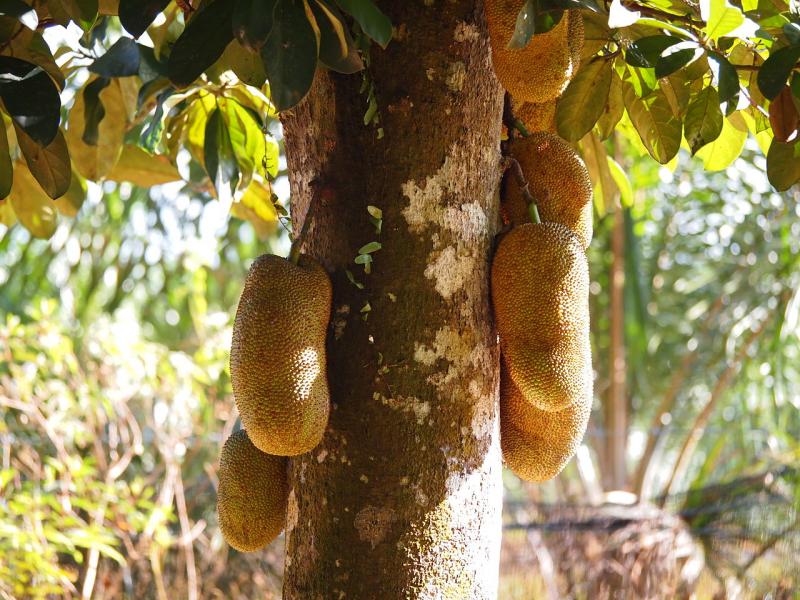The Tree with Nothing to Offer But Rot
Genesis 1:11b
“Then God said, ‘Let the earth bring forth the fruit tree that yields fruit according to its kind, whose seed is in itself, on the earth’; and it was so.”

Researchers studying the chempedak were surprised to discover that they bloom irregularly. One tree was watched by researchers for five years before it bloomed! While the flowers smell like watermelon, they offer no nectar to entice pollinating insects. Moreover, the insects that do pollinate the chempedak tree do not eat any of the pollen. What, then, attracts the two species of gall midges that pollinate the flowers? The answer: a fungus that attacks only the male flowers of the tree. The midges like to eat the fungus, so they crawl on the male flowers as they eat the fungus, picking up pollen. Then they go to the clumps of female flowers looking for more fungus, inadvertently pollinating them. This arrangement in which the tree depends entirely on a fungus to attract pollinators is unknown in any other species. This raises the question of how such an arrangement could have evolved. Without both the midges and the fungus, the first chempedak tree would have been the last. All three elements in this interrelated system had to have come into being at the same time.
The chempedak tree bears witness to a rapid creation of the interdependent plant and insect world where living things had to wait, at most, mere days for the other creatures it depends on to come into existence, just as Genesis reports.
Dear Father, with the creation I will bear witness that You are Creator. Amen.
Author: Paul A. Bartz
Ref: Science News, 3/18/00, p. 182, “Tree pollination needs male‑only rot.” Photo: Artocarpus integer Fruit and Tree by Tu7uh CCA 3.0 Unported